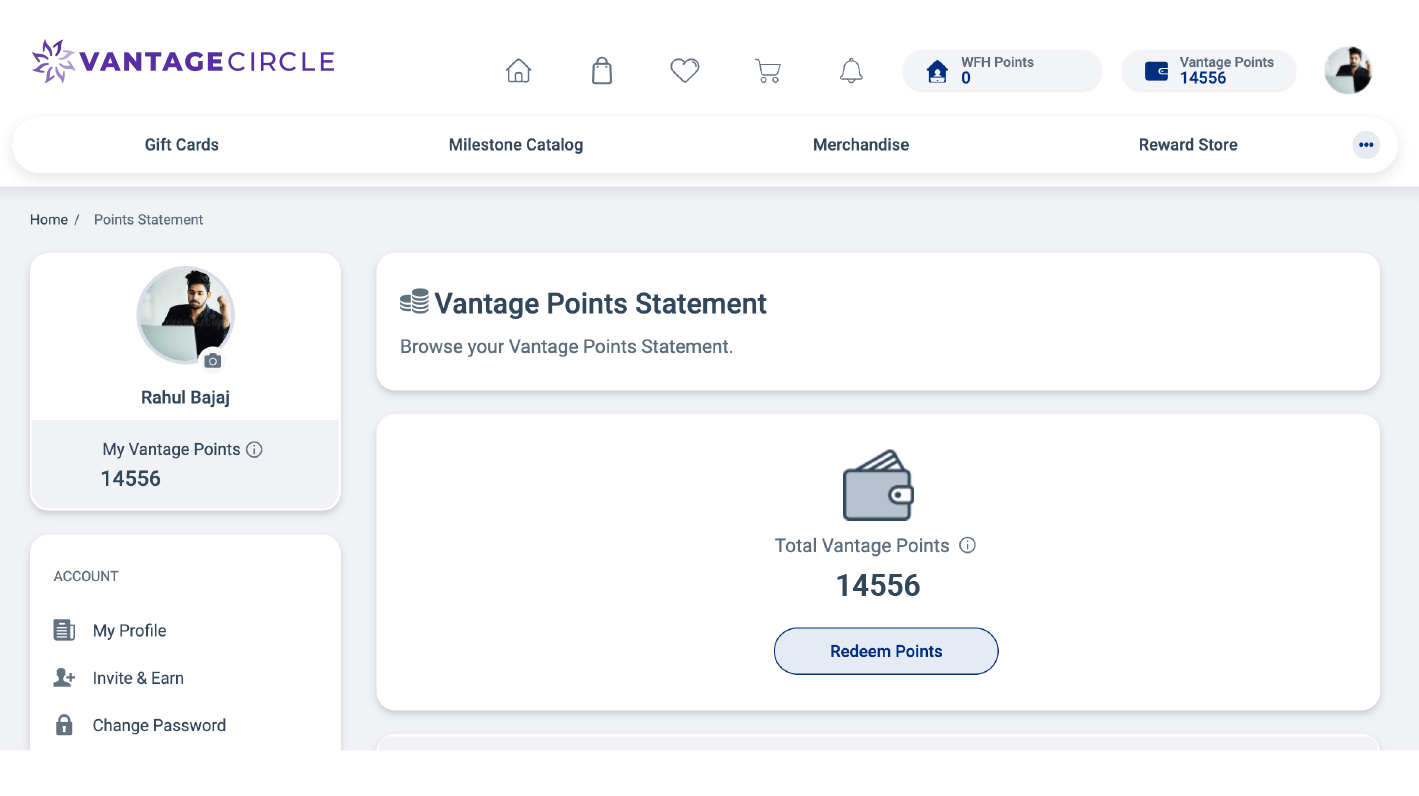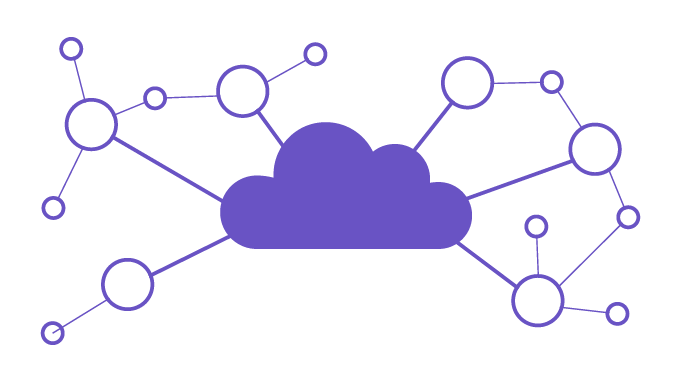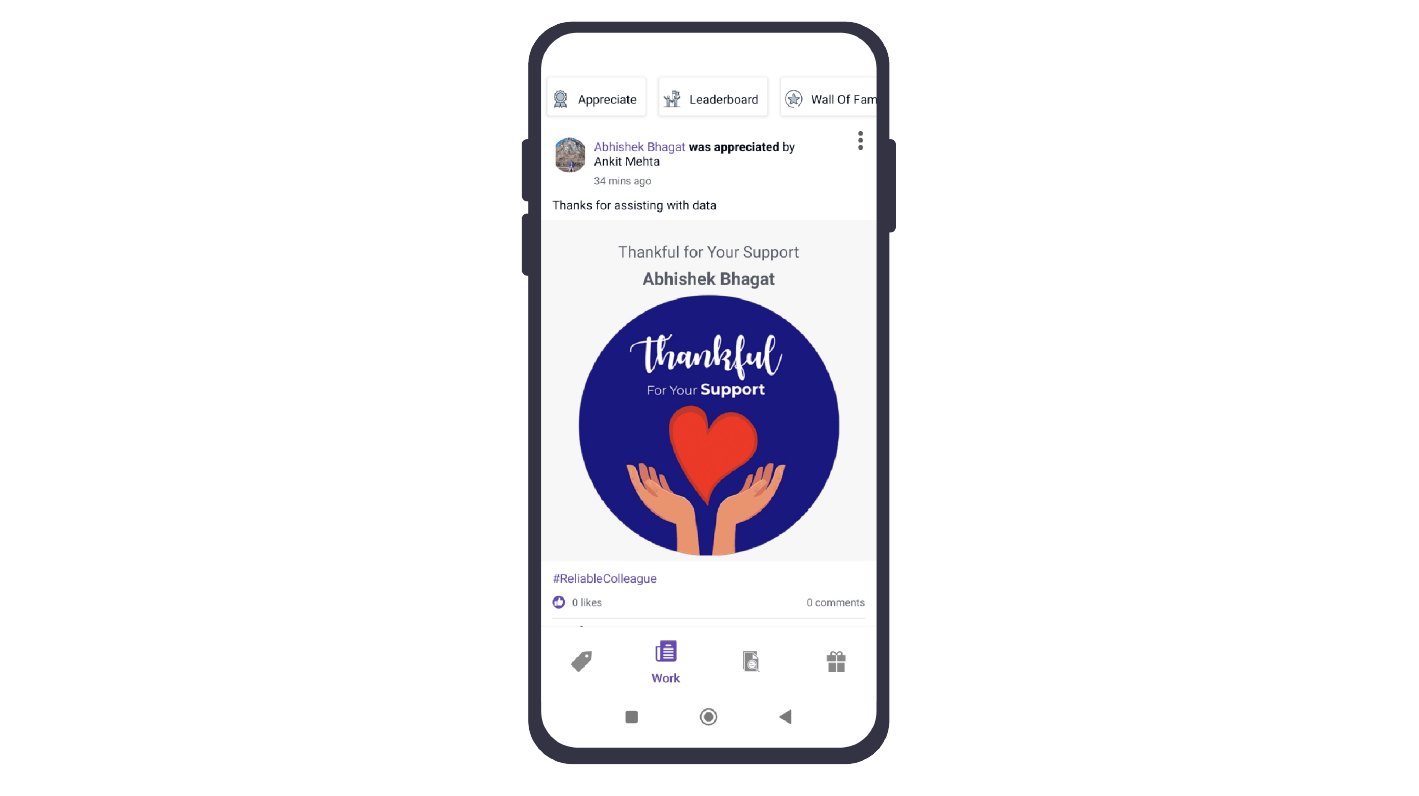Employee Reward System: Types, Features, Benefits, and Implementation
In today's intensely competitive business landscape, organizations are constantly seeking ways to enhance employee performance and gain a competitive edge. This is where strategic employee reward systems come in.
A robust employee rewards and recognition program attracts and retains top talent by making them feel valued. It drives performance by acknowledging achievements through monetary or non-monetary incentives.
However, implementation can be challenging. Success depends on aligning company goals, understanding employee motivations, choosing the right platform, and gathering ongoing feedback.
From covering types, features, benefits, and how to implement these systems. This blog aims to give you a comprehensive guide on employee reward system. So let’s get started!
Key Takeaways
- What is an Employee Reward System?
- Benefits of Implementing an Employee Reward System
- Understanding the Types of Employee Reward System
- How to Efficiently Implement an Employee Reward System?
What is an Employee Reward System?

An employee reward system refers to the strategies and programs companies implement to motivate and reward employees. It includes monetary and non-monetary incentives designed to recognize employees.
According to a report, 38% of employees want to be rewarded for their good work.
Effective employee rewards program within an organization enables peer-to-peer recognition. It creates a culture of gratitude where both minor and major achievements are acknowledged.
The emphasis on valuing efforts, not just output, ensures that employees feel appreciated for their dedication and hard work. It contributes to a positive work environment and enhances the overall employee experience.
Types of Employee Reward Systems
1. Monetary Rewards

Monetary rewards refer to any type of financial compensation, incentive or payment provided to employees in recognition of their work.
Some of the most common types of monetary rewards include:
-
Bonuses: Extra payments made in addition to an employee's regular salary and compensation. Common examples include performance bonuses, festive bonuses, etc.
-
Allowances: Monthly or annual lump sums given to employees that they can use at their discretion. Some examples are transportation allowances, housing allowances, etc.
-
Profit Sharing: A portion of the company's profits is distributed to employees, often based on a predetermined formula.
2. Non-monetary Rewards

Report suggests 65% of employees actually prefer non-monetary incentives over fiscal ones.
Non-monetary rewards are the intangible perks and benefits that employees receive from their employers. It is separate from their regular paycheck and does not involve direct financial compensation.
Let’s look at some common examples of non-monetary rewards:
-
Flexible Working Arrangements: Benefits like flexible work hours, work-from-home options, or additional time off help employees maintain a work-life balance.
-
Learning & Development Opportunities: Supporting employees in developing new skills through training programs, workshops, and mentorship opportunities.
-
Workplace Perks and Amenities: Non-monetary incentives can be workplace perks and amenities such as free snacks, coffee, on-site childcare, or recreational facilities.
3. Social Rewards

Social rewards focus on creating a positive work environment and include activities such as team-building events or celebrating achievements. This reward system provides a meaningful acknowledgement of achievements, big and small. It fulfils emotional needs and reinforces desired behaviours.
Examples of social rewards include:
-
Employee of the Month/Year: Selecting outstanding employees for special recognition based on nominations from peers or managers.
-
Public praise: This involves publicly praising and acknowledging employees for their contributions through company meetings or award ceremonies, etc., highlighting their achievements.
4. Assistance System

Assistance programs demonstrate a company's commitment to employee overall well-being. This initiative involves providing various services and resources to support employees' physical and mental health needs.
A few examples of assistance system include:
-
Wellness Programs: It promotes physical and mental health by giving access to fitness classes, nutrition seminars, and stress management workshops.
-
Mentorship Initiatives: Pairing employees with experienced professionals. Mentorship can help employees navigate challenges, set goals, develop new skills, and advance in their careers.
-
Training Programs: Includes workshops, seminars, online courses, and certifications tailored to employees' career paths and organizational needs.
7 Key Features an Employee Reward System Must Have
1. Point-based Rewarding
A points-based rewards system lets you show appreciation to your employees by offering redeemable points. It’s a tangible form of acknowledgment where points have a monetary value attached to them.
This feature enables organizations to introduce a flexible rewarding system. Employees earn redeemable points for demonstrating positive behaviours or achieving milestones.
And when it comes time to redeem those hard-earned points, the possibilities are endless. From gift cards to experiential rewards employees have the freedom to choose rewards that truly resonate with them.
Therefore, point-based rewarding is not just a feature; it's a game-changer. It transforms recognition from a mundane task into an exciting adventure.
So why settle for ordinary recognition when you can unlock a world of possibilities with point-based rewards? To know more about it, you can click here and understand all the complexities related with it.

Source: Vantage Rewards
2. Customizable Approval Process
The management structure of every organization differs significantly from one another. By offering customization options organizations can tailor the system to their specific needs.
In many organizations, the process of recognizing and rewarding employees often involves multiple stages of nomination and approval. This process is often time-consuming and can delay the process of rewarding your employees.
To address these challenges and streamline the employee reward process, it's crucial for the system to offer customization options. By enabling customization, organizations can ensure that the system accommodates their specific requirements and workflows, thereby enhancing efficiency.
From personalized recognition badges to branded reward catalogues, customization options empower companies to create a tailored experience that resonates with employees.
3. Flexibility in Choosing Rewards
One of the biggest USPs of a modern employee reward system is that it gives complete flexibility to your employees to select their own rewards. It is one of the most important things you must look at in a modern employee rewards and recognition platform.
By granting employees the autonomy to choose their own rewards, organizations empower individuals in a way that traditional programs often fail to achieve.
Whether it's monetary bonuses, gift cards, or experiential rewards, employees having the autonomy to select rewards instils a deeper sense of ownership.
Furthermore, integrating top-brand gift cards and vouchers directly into the point system further enhances the effectiveness of flexible reward programs. This seamless integration allows employees to access and utilize their rewards as they see fit easily.
4. Supports Peer-to-Peer Recognition
A study by SHRM found that recognition is an important factor in employee satisfaction.
Peer-to-peer reward and recognition systems tap into the intrinsic human need for validation. It fosters a culture of appreciation and camaraderie within the organization.
In peer-to-peer recognition, colleagues acknowledge and appreciate each other's contributions. It strengthens bonds between colleagues and cultivates a positive and supportive work environment where everyone feels valued and respected.
Implementing a system that allows employees to recognize and nominate their peers adds an extra layer of motivation and engagement. It reinforces positive behaviour and empowers employees to actively participate in shaping the organizational culture.
Furthermore, you can leverage various reward and recognition platforms to recognise your employees instantly and create a culture of mutual appreciation.

Source: Vantage Circle
5. Cloud-based Reward System

Leveraging cloud technology ensures accessibility and flexibility. Employees and managers can access the platform from any location. This level of convenience breaks down geographical barriers and enables seamless recognition.
Moreover, the scalability of cloud-based systems ensures that reward programs can adapt to the organisation's evolving needs. It can empower organizations of all sizes to foster a culture of appreciation and drive employee motivation to new heights.
And the customizability of cloud-based platforms allows businesses to tailor their reward systems to reflect their unique company culture and branding.
6. Mobile Accessibility in the Reward System
Mobile accessibility has the potential to revolutionize employee rewards and recognition systems as majority of the workforce is now equipped with smartphones.
A dedicated employee rewards app has the power to revolutionize the way recognition is delivered within organizations. With mobile accessibility, employees can conveniently nominate peers, redeem rewards, and track their progress on the go.
Imagine the convenience of acknowledging achievements as they happen, regardless of employees' locations. Managers could instantly send peer shout-outs or distribute bonus rewards in real time.
This instant recognition not only strengthens the bond between employees and the organization but also reinforces a culture of continuous appreciation.

Source: Vantage Circle
7. Easy to Implement
Implementing an employee reward system is a strategic decision that requires careful consideration. It's essential to align the reward system with the organization's goals and values to ensure its effectiveness.
When introducing an employee reward system, it's crucial to ensure that it aligns with the organisation's long-term objectives. For example, if the goal is to promote innovation and collaboration, the reward system should incentivize behaviours contributing to these objectives.
Furthermore, before implementing any reward system, it's imperative to have a thorough understanding of how it works. Doing this will make you realize the system's complexities and allow you to take care of any issue that might arise with the system.
Lastly, test the system with a few employees on board and record their views about it before the final implementation. This will provide valuable insights into the effectiveness of the system. It will also showcase how well it fits in with the employees of the organization.
Efficiently Implement an Employee Reward System

1. Define Specific Goals
Start by setting clear goals for your reward program. Identify what you want to achieve by rewarding staff– whether it's increasing productivity or boosting employee retention.
With clear goals guiding your program, you ensure that the rewards offered are meaningful and directly contribute to achieving business goals.
For instance, if your goal is to improve teamwork, consider recognizing collaborative efforts and celebrating successful team projects.
2. Involve Employees in Decision Making
Harness the power of collaboration by involving employees in the decision-making process. Seek their input on what types of rewards they find meaningful and motivating.
When employees see that their suggestions are being implemented, it instills a sense of ownership and connection to the organization.
For instance, if your team values flexibility, consider offering flexible work hours or remote work options as part of the reward program. It will ensure that the program resonates with the team.
3. Establish Clear Reward Criteria
Establishing clear reward criteria is similar to setting the rules of the game. Clarity is the key; it brings transparency to the reward system and ensures fairness.
For instance, you’re part of a sales team and the reward program is geared towards meeting sales targets. The clarity in criteria would mean defining precisely what needs to be achieved. Instead of vaguely stating "increase sales," specify a target, such as achieving a 15% increase in sales over the next quarter.
By setting such clear and quantifiable expectations, employees can understand what is required to earn rewards. This transparency eliminates any confusion or uncertainty.
4. Use an Employee Reward Platform
Leverage technology to streamline and enhance your reward program. However, ensure that the technology complements rather than complicates the overall strategy.
With an employee reward platform, you can instantly recognize and reward employees with a click. Platforms like Vantage Rewards and Bonusly make it easy to recognize, reward, and keep the entire process organized.
These platforms also offer a variety of reward options, from gift cards to extra vacation days, making the program more engaging and enjoyable for employees.
5. Launch Program to Staff
Launching the reward program for the staff is a crucial step in ensuring its success. Start by announcing the program with an exciting email highlighting the rewards and how to earn them.
Conduct a brief training session for managers on how to use the system and recognize employees effectively. Roll out the program with a kickoff event, and encourage staff to participate and provide feedback
Showcase the program as a positive initiative and encourage active participation. Keep the program visible with regular updates and celebrate successes to maintain momentum and engagement.
6. Gather Ongoing Employee Feedback
Gathering employee feedback is crucial for the success of your employee reward program. It lets you stay connected with your team, understand their perspectives, and adapt the program to meet their needs and preferences.
Maintain a feedback loop by regularly seeking input from employees. This ensures that the program remains relevant and addresses the team's evolving needs.
For example, you can conduct employee surveys or hold feedback sessions to understand which rewards are most appreciated and if any adjustments are needed in the criteria.
Benefits Of Implementing an Employee Reward System

Implementing an employee reward system can have numerous benefits for both employees and employers. Let’s look at some of them:
Increases Motivation
A well-designed reward system can boost employee motivation by providing tangible incentives for high performance. When employees are rewarded and recognized for their hard work, they are more likely to put in extra effort.
Enhanced Employee Engagement
Reward systems can help increase employee engagement by creating a positive work environment where employees feel valued and appreciated. Rewarding accomplishments encourages employees to actively participate in achieving organizational goals.
Improved Retention Rates
Employees who feel appreciated are less likely to seek opportunities elsewhere, reducing turnover. Rewarding employees for their contributions can increase job satisfaction and employee loyalty, leading to higher retention rates.
Boosted Productivity
Employees tend to be more productive when they are engaged and motivated. Organizations can incentivize employees to work efficiently and effectively by aligning rewards with performance goals. This ultimately leads to improved productivity and business results.
Foster a Culture of Recognition
Implementing a reward system can foster a culture of recognition within the organization. When employees see their colleagues rewarded for their efforts, it sets a positive example and encourages others to strive for excellence.
Attract Top Talent
A robust employee reward system can also help attract top talent to the organization. Job seekers are often drawn to companies that value and reward their employees. A robust reward system makes it easier for organizations to attract candidates.
Bottom Line
In conclusion, implementing a strategic employee reward system is not merely an expenditure but an investment with remarkable returns.
Employee reward systems are essential for addressing workplace issues and fostering a positive work culture. They have proven effective in many organizations, driving real-time recognition and motivation. So, take action now and implement a strategic reward system to elevate your workplace today.





















